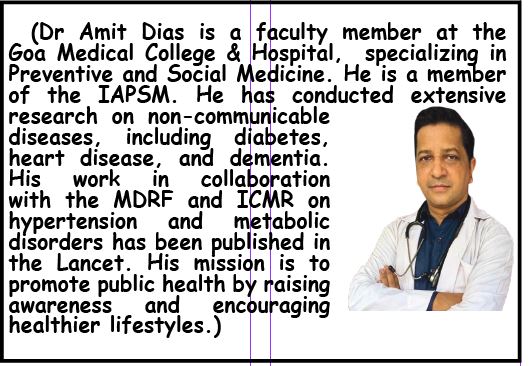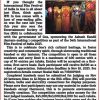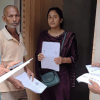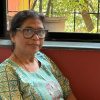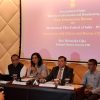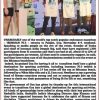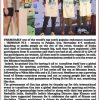Goa is abuzz with excitement as vintage bike and car owners, users, collectors and fans are decking […]
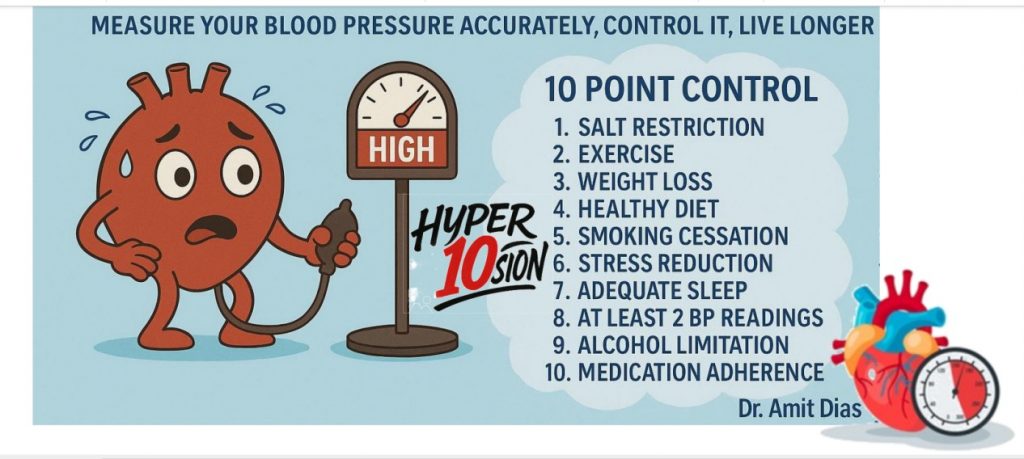
ATTENTION ON HYPERTENSION TO SAVE LIVES Know the Myths and Facts
May 17- May 23, 2025, MIND & BODY, HEART & SOUL May 16, 2025DR AMIT DIAS answers 10 questions to improve the quality of your health!
MAY 17 is World Hypertension Day. This week we have Dr Amit Dias, from Goa Medical College & Hospital and CO PI of the ICMR- INDIA study. He says, “Measure Your Blood Pressure Accurately — Control it, Live longer — is the theme for this year.” He reminds us of the power of early detection and control in saving lives with a 10-point action plan for keeping hypertension under control and the 10 complications of what happens if hypertension is uncontrolled…
Q1: Thanks doctor for shifting our attention to hypertension. Let’s start by understanding why is hypertension such a cause for concern?
A1: Hypertension is certainly a cause for concern, in fact it is often called the “silent killer” because it typically presents no symptoms until severe damage is already done. It’s a major risk factor for heart attacks, strokes, kidney failure, and even vision loss. Globally, over 1.28 billion adults between the ages of 30–79 suffer from hypertension, yet nearly 46% are unaware they have it according to the World Health Organization. It is the leading preventable cause of death worldwide, making it a major public health challenge.
The theme this year is “Measure Your Blood Pressure Accurately, Control It, Live Longer.” Which reminds us to get tested and keep your pressure under control. There are several myths surrounding hypertension and we need to use opportunities to dispel the myths. Addressing this problem requires thinking out of the box, research and innovation.
Q2: Can you mention some of the innovations adopted by you and could you shed light on the myths and the facts on hypertension?
A2: In commemoration of World Hypertension Day this year, we have initiated a dedicated Non-Communicable Disease (NCD) register at the Urban Health Center in St Cruz. This initiative aims to systematically track every individual diagnosed with hypertension and other NCDs, ensuring timely follow-up and minimizing treatment defaulters. We have also prioritized the continuous availability of essential medications to support effective disease management. We are also implementing the 10-point action plan for hypertension control.
NCDs remain a top priority for the Health Department of Goa. We are proud of the significant strides made in tackling these conditions through the innovative Goa Model — a set of strategic, people-centered initiatives championed under the dynamic leadership of our Health Minister Vishwajeet Rane.
I would like to acknowledge the efforts of Dr Sagar Ghodekar, WHO consultant for NCDs in Goa, whose dedication to innovation and program monitoring has helped in enhancing the quality of work carried out through the health centers through the NP-NCD program.
Additionally, my students, Dr Yash Caroicar and Dr Suchi Kamat, will be conducting a research study under my guidance and in collaboration with Dr Ghodekar. The focus of their work is to explore the myths and misconceptions surrounding NCDs — key psychological barriers that often hinder optimal care and adherence.
Here are 10 common myths surrounding hypertension and the corresponding facts that help dispel them.
Myth: “I don’t have symptoms, so my blood pressure must be normal.”
Fact: Hypertension is often called the “silent killer” because it typically has no symptoms until serious damage is done. Regular screening is essential.
Myth: “High blood pressure runs in my family. There’s nothing I can do about it.”
Fact: Genetics play a role, but lifestyle changes like a healthy diet, regular exercise, and quitting smoking can significantly reduce risk.
Myth: “If I feel fine, I can stop taking my blood pressure medicine.”
Fact: Stopping medication without a doctor’s advice can be dangerous. Continue treatment even if you feel well.
Myth: “Only old people get high blood pressure.”
Fact: While risk increases with age, young adults and even children can develop hypertension — especially with poor lifestyle habits.
Myth: “I don’t use table salt, so I’m safe from high blood pressure.”
Fact: Most sodium comes from processed and packaged foods — not just the salt shaker. Read labels and limit sodium intake.
Myth: “Hypertension is curable.”
Fact: Hypertension is manageable, not curable in most cases. It requires lifelong management and lifestyle modifications.
Myth: “Natural remedies are enough to treat high blood pressure.”
Fact: Some natural approaches help, but medical treatment may still be necessary. Always consult a healthcare professional.
Myth: “Wine or alcohol helps lower blood pressure.”
Fact: Alcohol will raise blood pressure and interfere with medications.
Myth: “Once my blood pressure is under control, I don’t need to monitor it.”
Fact: Regular monitoring is key to ensuring blood pressure stays in a safe range, even if you’re on medication.
Myth: “All blood pressure medications are the same.”
Fact: There are different types of medications. Treatment is individualized based on your health condition and response.
Q3: What are the strategies for control of hypertension?
A3: Keeping to the theme, let me give you 10 evidence-based strategies recommended for managing and controlling hypertension.
- Reduce Salt Intake – Aim for less than 5g/day; prefer fresh, unprocessed foods.
- Eat a Healthy Diet – Rich in fruits, vegetables, whole grains, and low-fat dairy.
- Be Physically Active – At least 30 minutes of moderate activity most days.
- Maintain a Healthy Weight – BMI <25; even 5–10% weight loss helps.
- Limit Alcohol Intake – No more than 2 drinks/day for men, 1 for women.
- Stop Smoking and Avoid Tobacco – It damages blood vessels and raises BP.
- Manage Stress – Use relaxation techniques like yoga, meditation, or breathing. Ensure adequate sleep.
- Regularly Monitor BP – At home and at health facilities. At least twice in a year for those with normal levels.
- Adhere to Medications – Take as prescribed, without missing doses.
- Stay Informed – Pay attention to hypertension. Know your risk, know your numbers, and stay engaged.
Q4: When do you say that person has hypertension?
A4: High blood pressure, or hypertension, is defined as a condition in which the force of the blood against the walls of the arteries is consistently too high, increasing the risk of heart disease, stroke, kidney problems, and other health issues.
Blood pressure is interpreted as follows:
Normal blood pressure: Less than 120/80 mm Hg
Elevated blood pressure: Systolic 120–129 and diastolic less than 80 mm Hg
Hypertension (Stage 1): Systolic 130–139 or diastolic 80–89 mm Hg
Hypertension (Stage 2): Systolic ≥140 or diastolic ≥90 mm Hg
Hypertensive crisis: Systolic >180 and/or diastolic >120 mm Hg (requires immediate medical attention)
Even a small increase in blood pressure over time can cause damage to organs. That’s why early detection and regular monitoring are crucial.
Q5: What are the complications if hypertension is not controlled?
A5: Let me give you 10 complications of uncontrolled, hypertension — they can be serious and sometimes fatal. These include:
- Heart Attack (myocardial Infarction)
- Stroke (ischemic or hemorrhagic)
- Heart Failure
- Chronic kidney disease
- Retinopathy leading to vision loss
- Aneurysms (e.g. aortic aneurysm)
- Cognitive decline and dementia
- Peripheral arterial disease
- Left ventricular hypertrophy (LVH)
- Sudden cardiac death
These underscore the importance of early diagnosis and consistent treatment
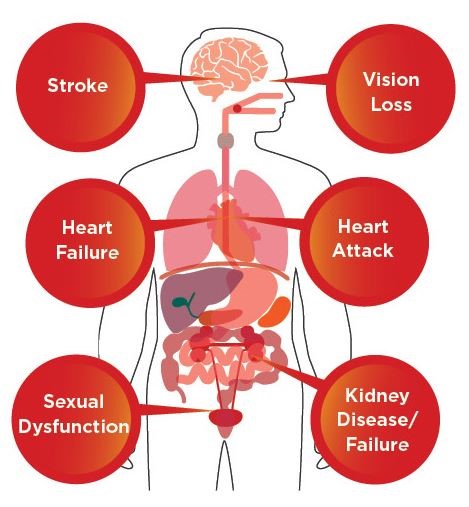
Q6: What are the risk factors for Hypertension?
A6: There are both modifiable and non-modifiable risk factors:
Non-modifiable: Age, genetics, and family history.
Modifiable: Poor diet (especially high salt intake), obesity, lack of physical activity, alcohol consumption, stress, and tobacco use.
Even air pollution and poor sleep have also been added to the list of emerging risk factors.
Q7: Can Hypertension be prevented and controlled?
A7: Absolutely! The good news is that it can be prevented with lifestyle changes. The amount of prevention possible depends on individual factors and the extent of current blood pressure levels, but consistent efforts can significantly reduce the risk and improve overall health. For those already diagnosed, regular monitoring, medication adherence, and behavior modification are essential. Early detection through regular screening is the first step toward effective control.
Q8: What are the initiatives to tackle this problem?
A8: There are several initiatives. The government launched the India Hypertension Control Initiative (IHCI) in collaboration with WHO and ICMR. It aims to ensure that 25 million people with hypertension are treated and controlled by 2025. Under the National Programme for Prevention and Control of Non-Communicable Diseases (NP-NCD), screening is done at health and wellness centres. The program emphasizes the 5 A’s: Awareness, Access, Availability of medicines, Adherence to treatment, and Accountability in care. At the Urban Health & Training Center at St Cruz, which is under my care, I have put our interns in charge of screening, tracking and counselling of people with hypertension. In this way they not only raise awareness, but also ensure adherence and timely interventions by our team of residents.
Q9: What are the early warning signs and how should one monitor their blood pressure?
A9: Hypertension is usually asymptomatic, which is why regular checks are crucial. In some cases, people may experience:
Headaches
Dizziness
Shortness of breath
Nosebleeds
Using a digital BP monitor at home is advisable, especially for high-risk individuals. Regular measurement—at least once every 6 months for adults—is key to early detection.
Q10: How common is hypertension in India and in Goa?
A10: In India, nearly 1 in 3 adults suffers from hypertension. According to the NFHS-5, the prevalence is increasing, especially in urban areas due to lifestyle changes. Goa, though relatively healthier on some indices, is witnessing a rising trend, particularly among the middle-aged and elderly population.
I was part of the ICMR- INDIAB study, a large national study on diabetes, Hypertension and other metabolic non-communicable diseases in India. We found that the prevalence of hypertension was 35.5%. This means that over one-third of the study population had hypertension. In Goa the prevalence was 45.8% in those above 20 years that was much higher. The study in Goa was led by our endocrinologist at GMC, Dr Ankush Dessai.
What is your message to the readers?
Let us not let hypertension sneak up on us. It is preventable, treatable, and controllable. The earlier we act, the better the outcomes. So this World Hypertension Day, take a moment to measure your blood pressure and encourage others to do the same. Let’s give due “attention” to hypertension—because prevention is always better than cure. Spread the appropriate message and help dispel the myths that surround hypertension.
